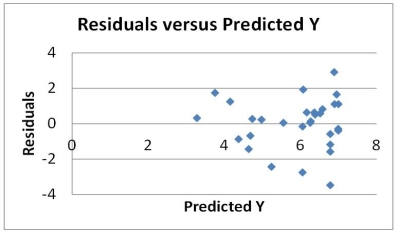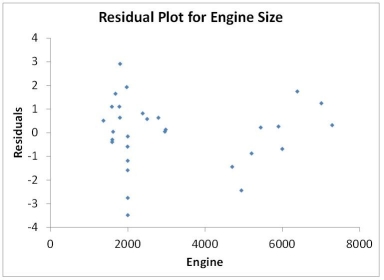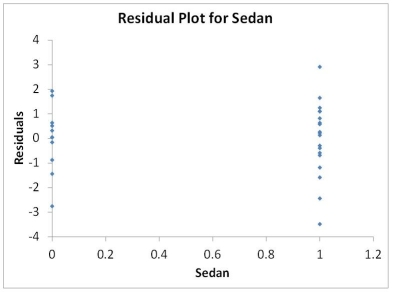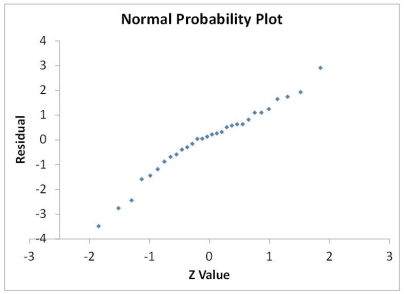Short Answer
TABLE 14-16
What are the factors that determine the acceleration time (in sec.)from 0 to 60 miles per hour of a car? Data on the following variables for 30 different vehicle models were collected:
Y (Accel Time): Acceleration time in sec.
X1 (Engine Size): c.c.
X2 (Sedan): 1 if the vehicle model is a sedan and 0 otherwise
The regression results using acceleration time as the dependent variable and the remaining variables as the independent variables are presented below.  The various residual plots are as shown below.
The various residual plots are as shown below. 


 The coefficient of partial determinations
The coefficient of partial determinations  and
and  are 0.3301,and 0.0594,respectively.
are 0.3301,and 0.0594,respectively.
The coefficient of determination for the regression model using each of the 2 independent variables as the dependent variable and the other independent variable as independent variables (  )are,respectively 0.0077,and 0.0077.
)are,respectively 0.0077,and 0.0077.
-Referring to Table 14-16,________ of the variation in Accel Time can be explained by engine size while controlling for the other independent variable.
Correct Answer:

Verified
Correct Answer:
Verified
Q61: TABLE 14-5<br>A microeconomist wants to determine how
Q166: TABLE 14-19<br>The marketing manager for a nationally
Q200: TABLE 14-19<br>The marketing manager for a nationally
Q201: TABLE 14-18<br>A logistic regression model was estimated
Q202: TABLE 14-17<br>Given below are results from the
Q203: TABLE 14-15<br>The superintendent of a school district
Q206: TABLE 14-18<br>A logistic regression model was estimated
Q207: TABLE 14-4<br>A real estate builder wishes to
Q208: TABLE 14-6<br>One of the most common questions
Q329: TABLE 14-8<br>A financial analyst wanted to examine